Migrant workers: Summer on a strawberry farm

In a previous exhibition, illustrations by Sarah Hannis showed the work of seasonal migrants in winter.
As we progress to warmer months, this exhibition shows the role of migrant workers during summer on a UK strawberry farm.
The story is based on interviews with workers and on photos they shared during the Feeding the Nation research project.
Join us as we follow the journey of strawberries from harvest through to their arrival on supermarket shelves.
This exhibition is a collaboration between artist Sarah Hannis, the Feeding the Nation research team, and The MERL.
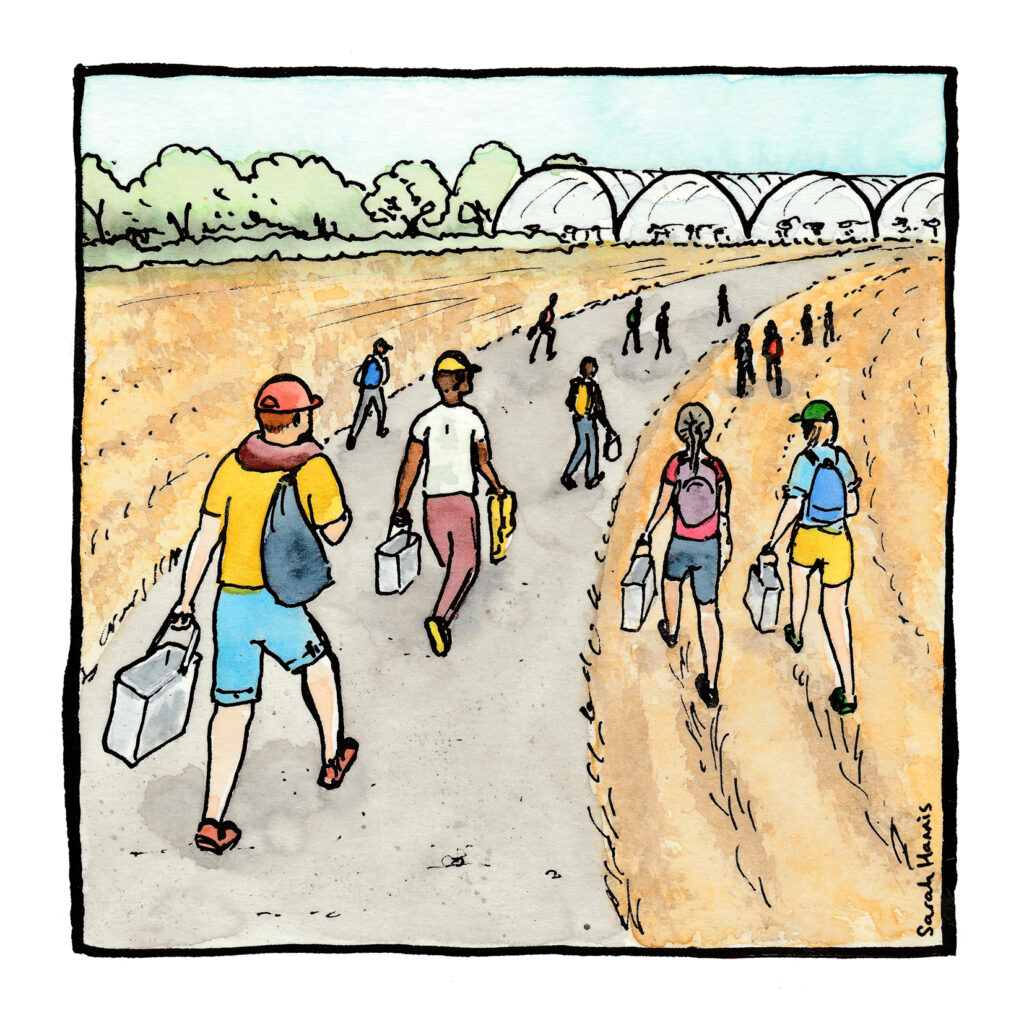
Entering the field
The seasonal workers arrive from their accommodation via a dusty farm track to the field. During their time in the UK, they are immersed in the British countryside as a working environment. Some will be familiar with these rural spaces from having returned annually or working in farming back home.
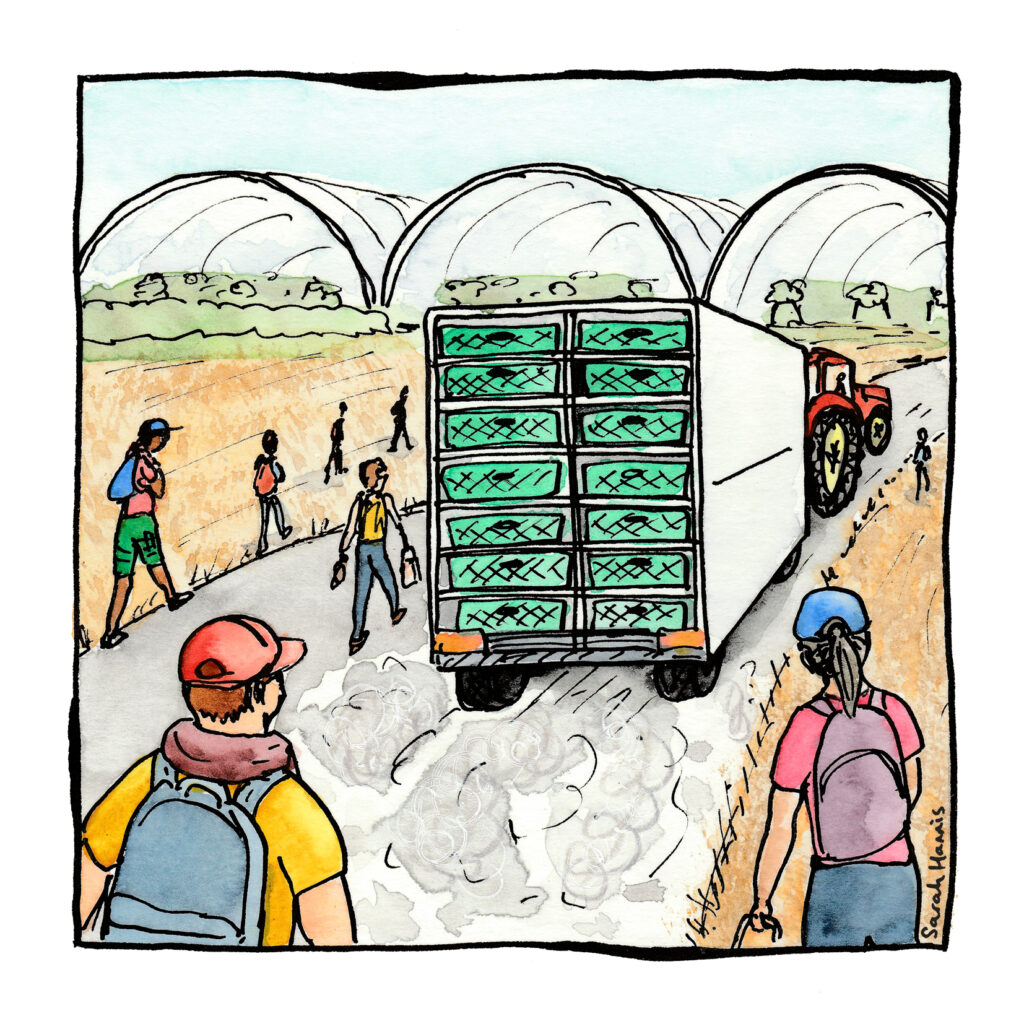
Preparing
A tractor transports a trailer full of crates to the strawberry tunnels. They are ready to be filled with strawberries once they are harvested.
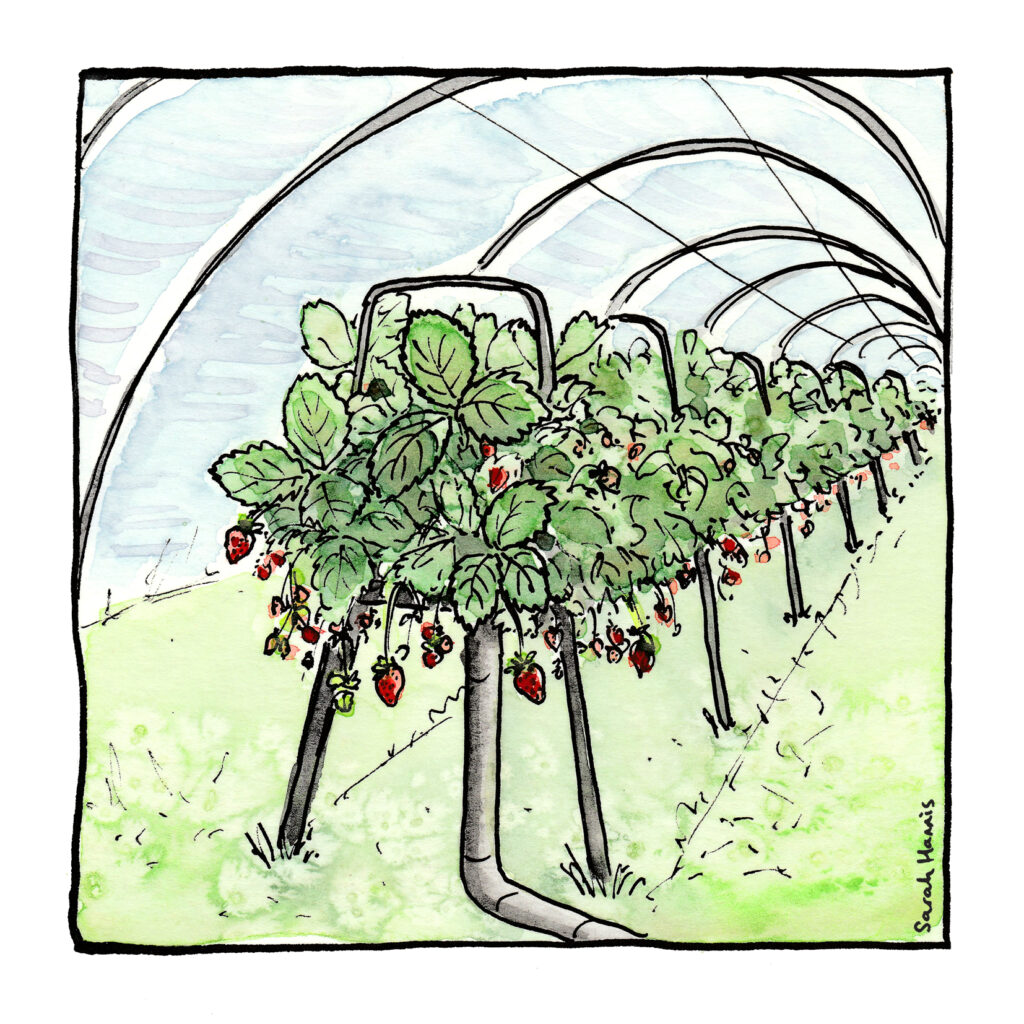
Introducing the plants
There are several lines of strawberry plants under each poly-tunnel. Here the plants are grown in an elevated position on tabletops which means that workers don’t have to bend down. Easy access to the fruit allows it to be picked quickly.
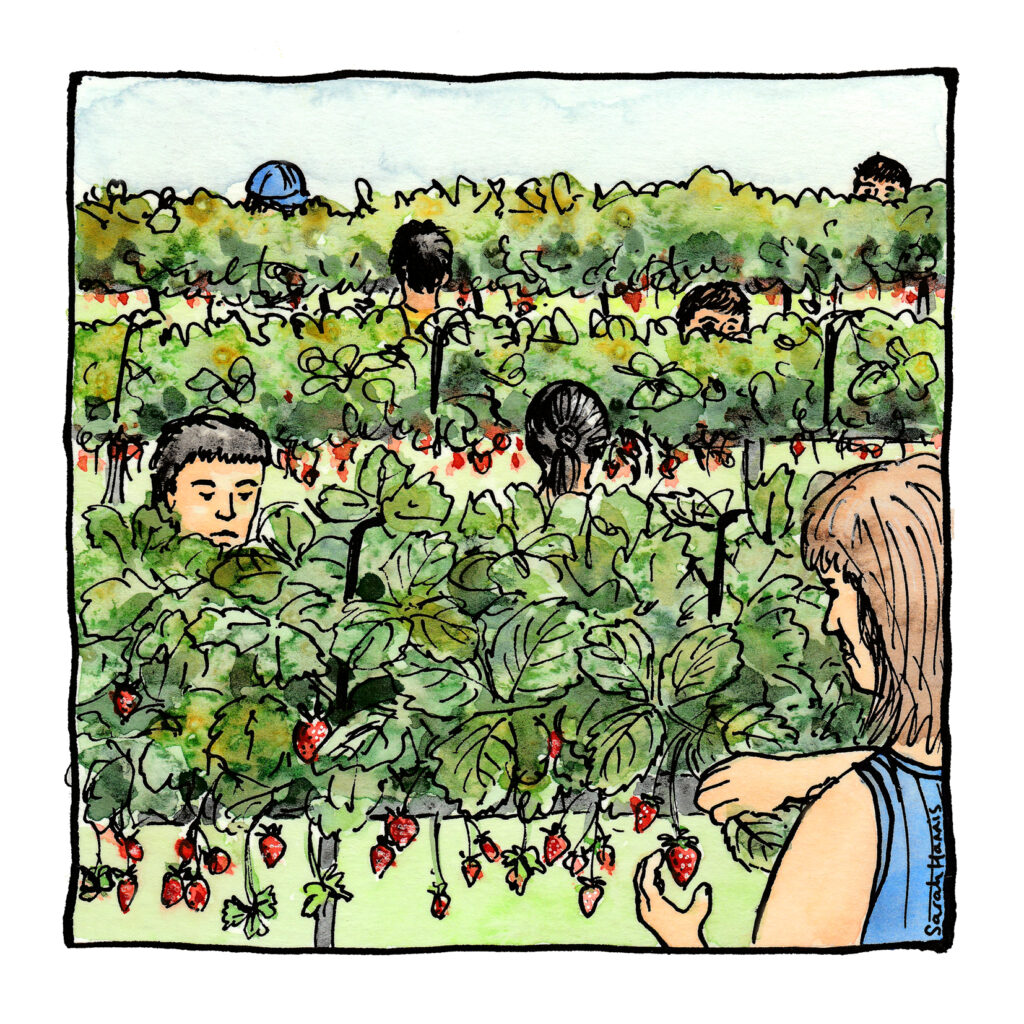
Gaining momentum
On larger farms, hundreds of workers are required during harvest season to pick the fruit. It can be quite warm under the tunnels when the sun is shining. Picking occurs when the conditions are right so working hours depend on the weather and crops being ready.
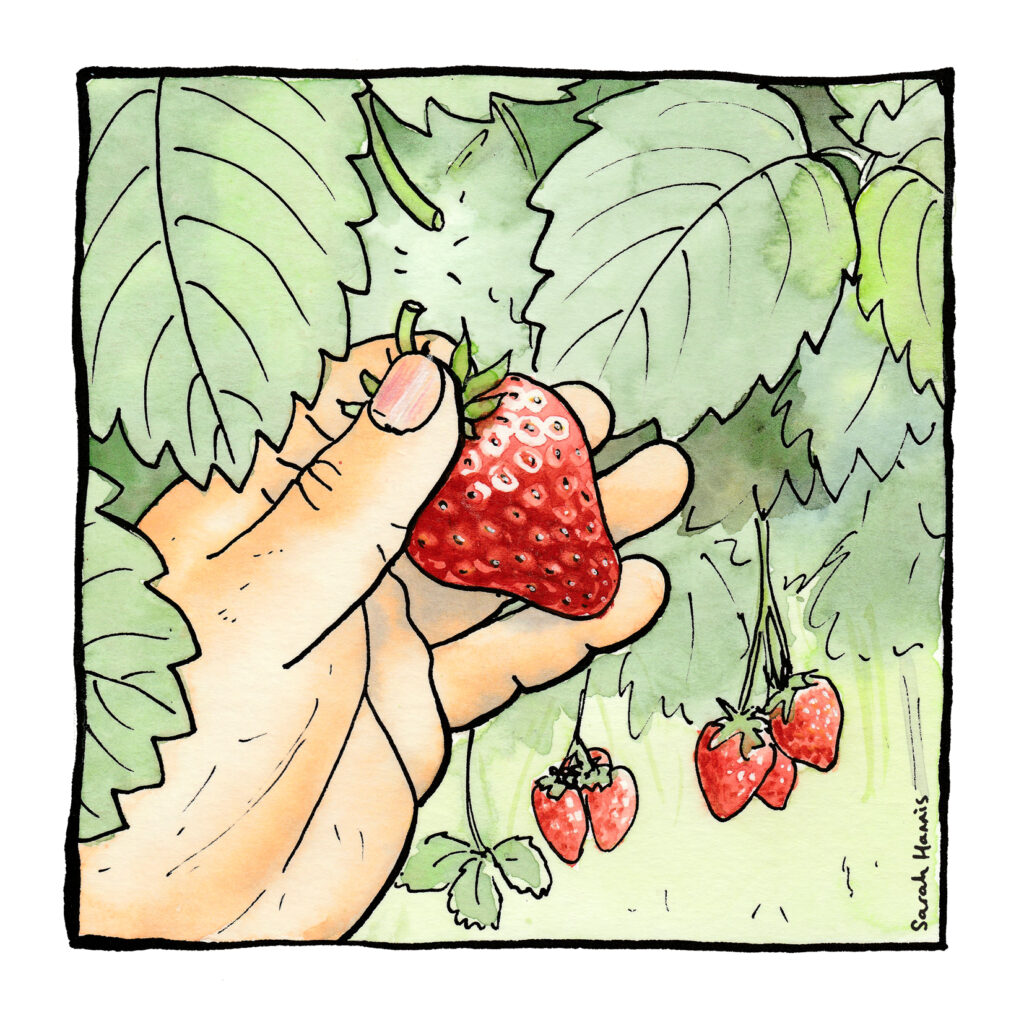
Picking
Each strawberry is picked by hand. Human touch can be more effective than using machinery due to the delicate nature of soft fruit. The strawberries are placed carefully in trolleys which fit between the rows of fruit plants.
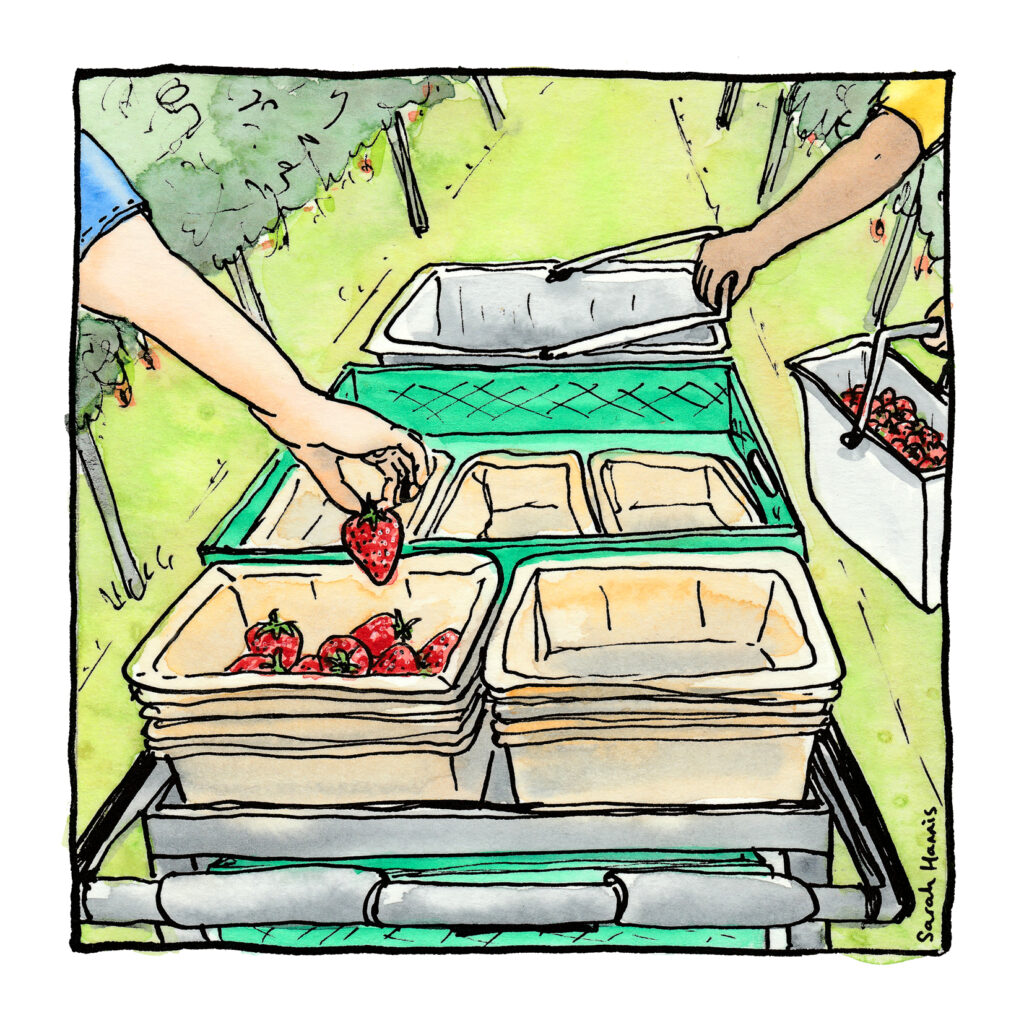
Checking and weighing
The strawberries are taken to a supervisor station to be quality checked and weighed. Many farms pay each worker based on the weight of the fruit they pick. Seasonal workers who return to the farm in future years may get promoted to a supervisor over time based on their performance.
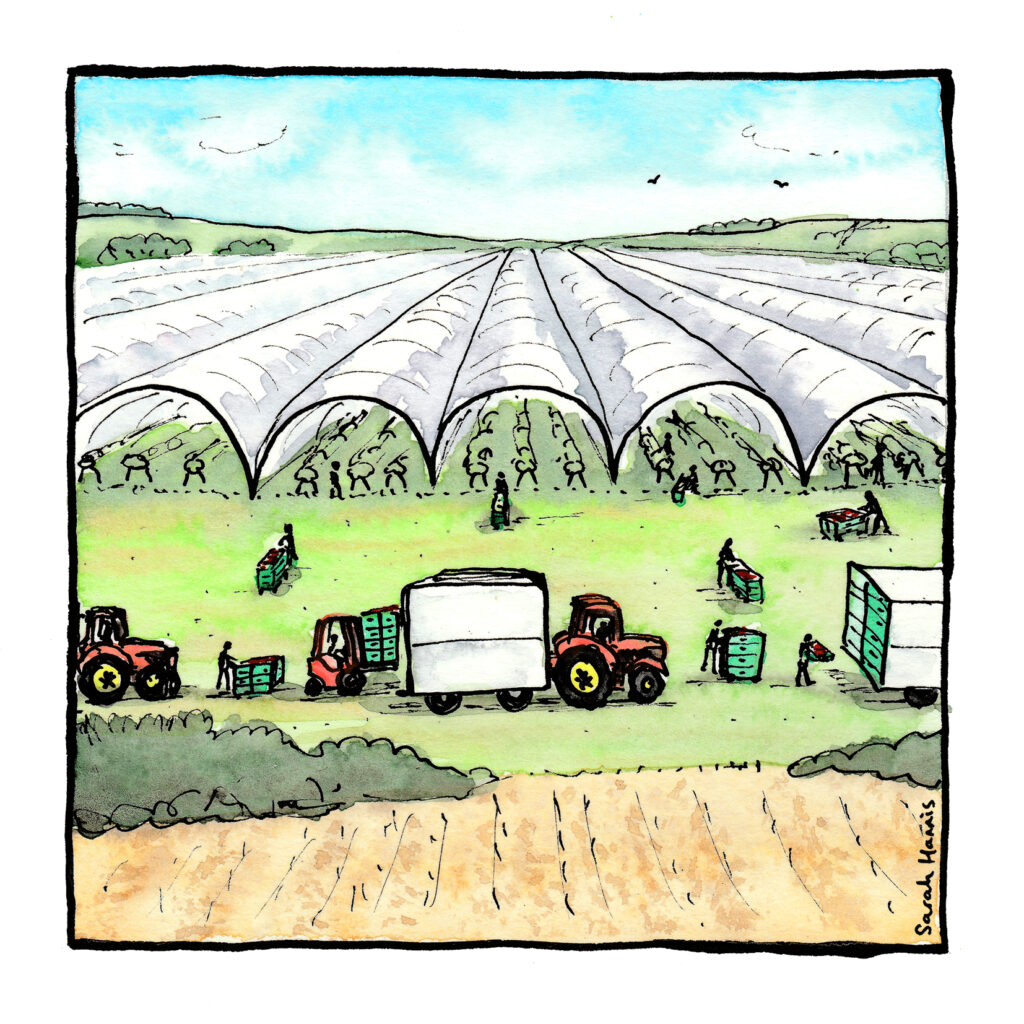
Loading
The crates of strawberries are loaded into trailers and towed away by tractor to the packhouse. The most experienced workers are assigned the task of driving machinery on the farm and others can learn these new skills over time.

Unloading
Workers help unload the pallets into the packhouse. Many farms have their own packhouses on site where the fruit picked a few hours earlier is prepared to be sent to supermarkets.
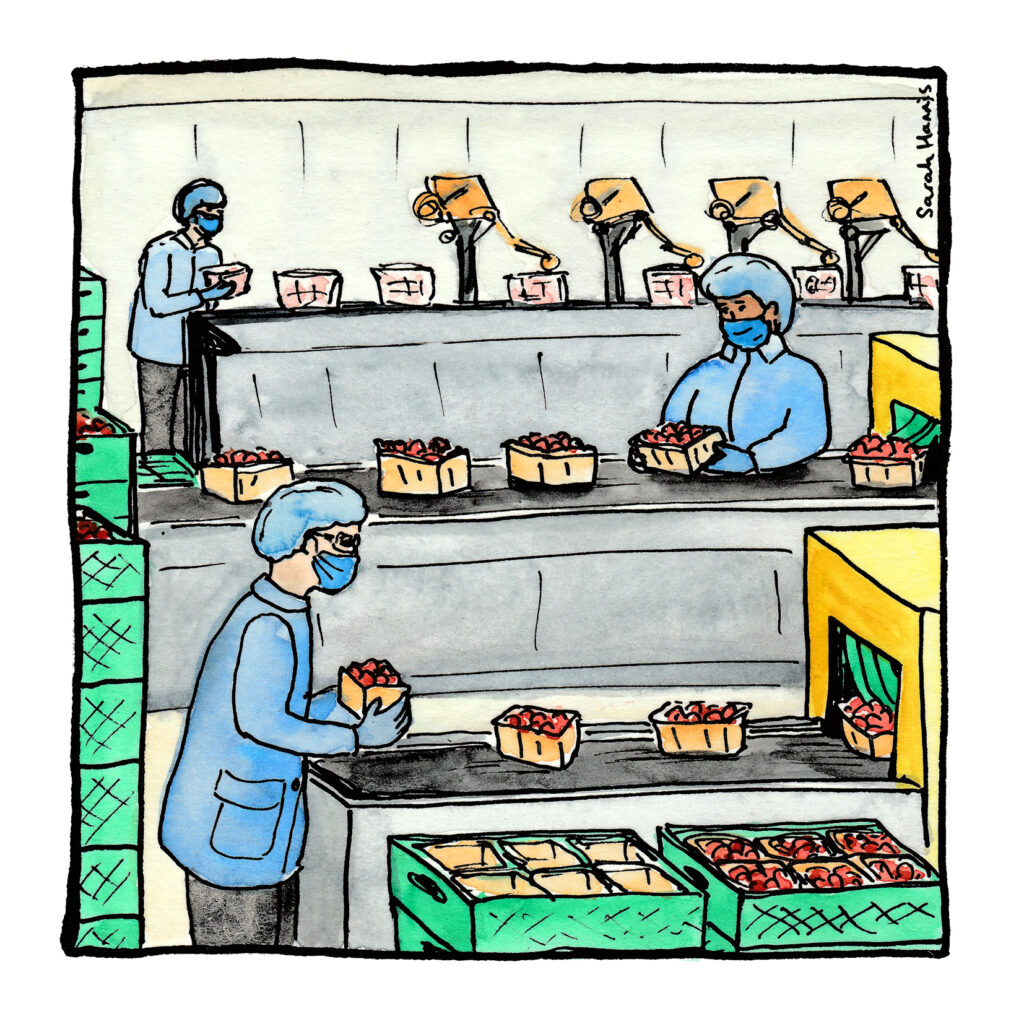
Packing
The strawberries are washed, graded and packed. During peak season, the packhouse can run 24 hours a day with workers on shifts. Certain activities such as weighing, labelling and moving punnets have become automated by machinery which saves time.
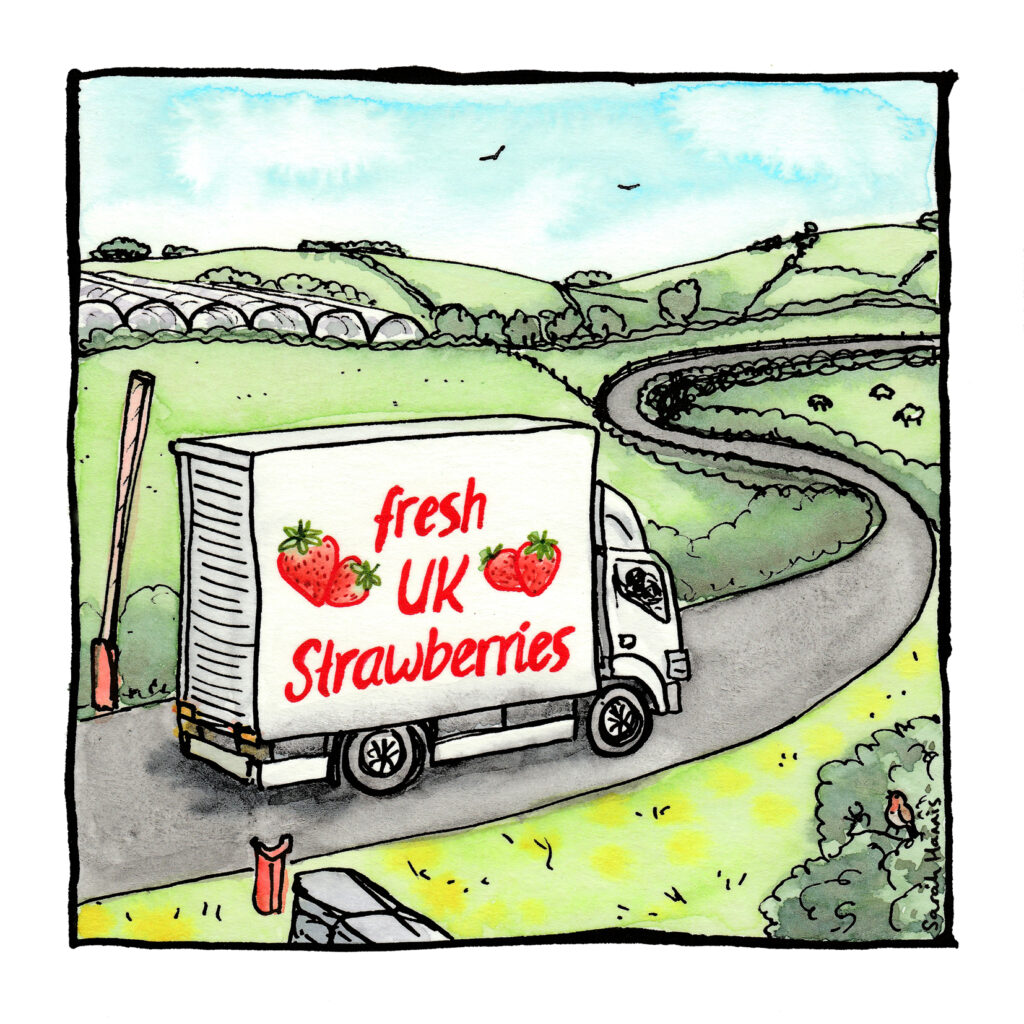
Distributing
The strawberries travel by lorry straight from the farm to the shops for maximum freshness. The price paid to farmers is determined by the size and quality of the fruit. As berries are ready to be harvested in summer in the UK, they are seasonal produce.
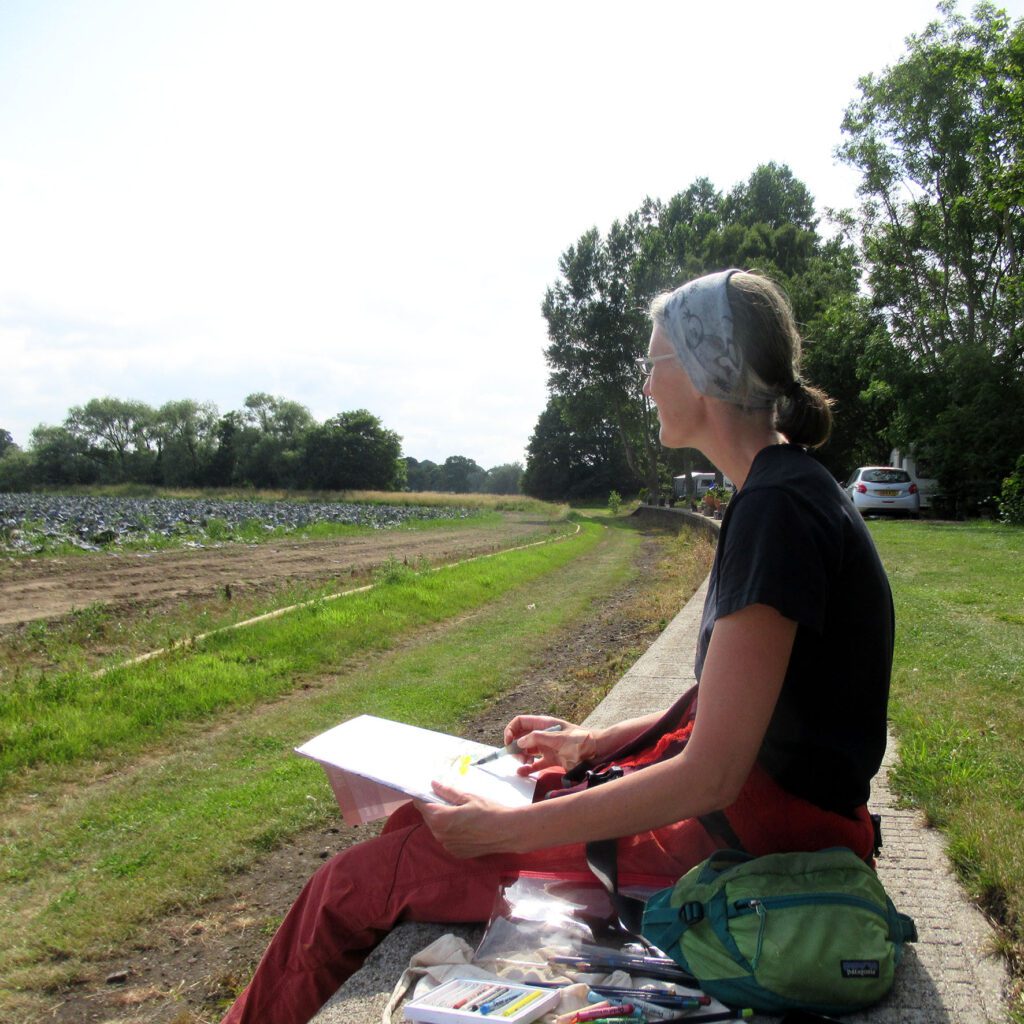
Meet the artist
Sarah Hannis is an illustrator who sketches what she sees around her almost everyday. Her sketchbooks are filled with ink and watercolour drawings of scenery, birds, plants, insects, and people. Together they evoke a sense of time and place.
In this collection, Sarah hopes the feeling of being in someone else’s shoes comes across to provide a small window into the lives of migrants working in the UK.
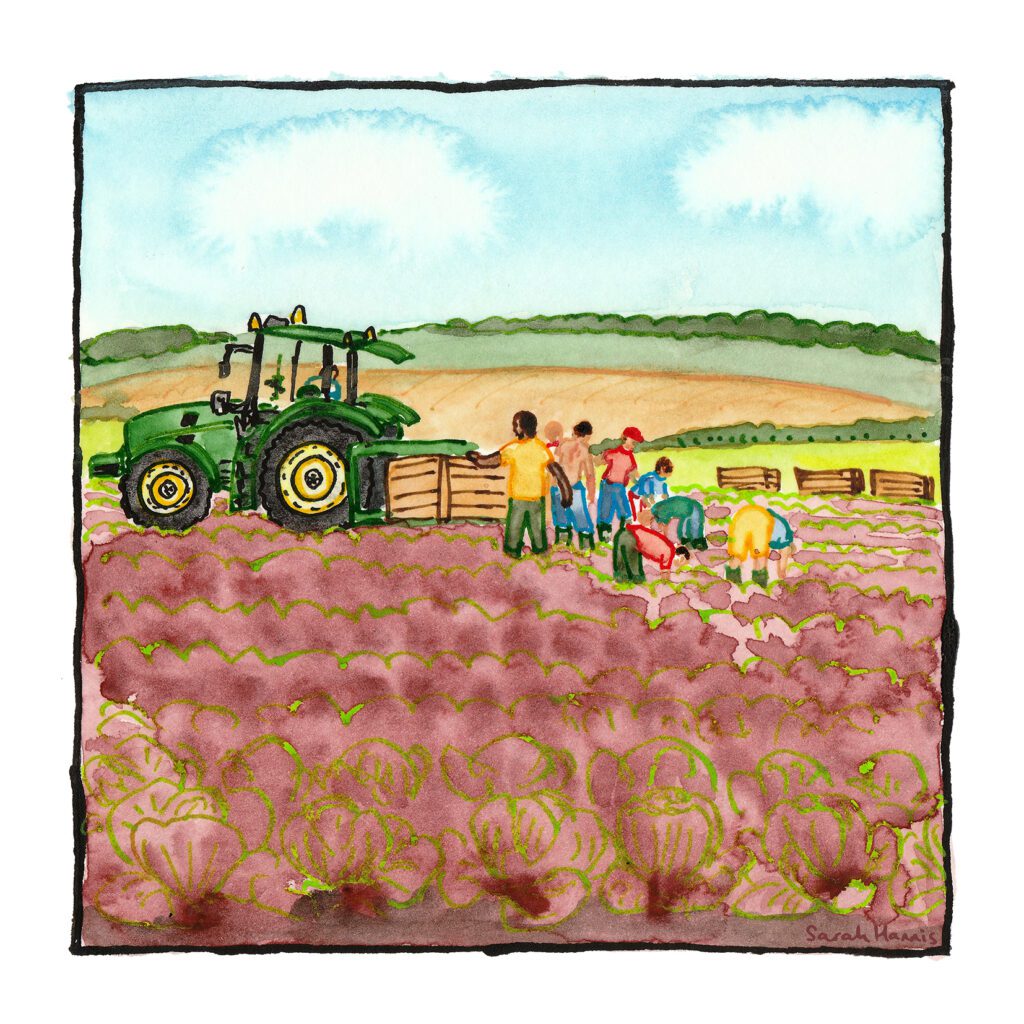
Feeding the Nation Research
Feeding the Nation is a research project examining the everyday experiences of seasonal agricultural migrant workers and farmers throughout 2021. Using remote qualitative interviews and data analysis, findings support policy interventions from the Department of Environment, Food and Rural Affairs (DEFRA) and also inform support materials for seasonal migrants co-produced with New Europeans.

Acknowledgements
Feeding the Nation is an Economic and Social Research Council / UK Research and Innovation funded project (ES/V015257/1). It is a collaboration between the School of Sociology and Social Policy at the University of Leeds (Dr Roxana Barbulescu / Dr Bethany Robertson), and the Centre on Migration, Policy, and Society at the University of Oxford (Professor Carlos Vargas Silva / Rosaleen Cunningham). Dr Ollie Douglas and Isabel Hughes are pleased to share this project at The MERL.
With special thanks to all who participated in the research.